HVLP or Airless Paint Sprayer? Which is Your Best Option?
- Categories:Blog
- Author:HVBAN MKT Dept
- Origin:
- Time of issue:2024-03-14 15:55
- Views:0
HVLP or Airless Paint Sprayer? Which is Your Best Option?
(Summary description)
- Categories:Blog
- Author:HVBAN MKT Dept
- Origin:
- Time of issue:2024-03-14 15:55
- Views:0
HVLP or Airless Paint Sprayer? Which is Your Best Option?
Introduction
Painting tasks often present challenges, from achieving a smooth finish to considering spraying efficiency and minimizing overspray and waste. In such scenarios, selecting the appropriate painting tool becomes crucial. Two popular options are HVLP (High Volume Low Pressure) and airless paint sprayers. But which one is the better choice? HVLP or Airless Paint Sprayer? And why do some people say you need to have them both? Understanding their differences and applications is key to making an informed decision.
What is HVLP?
HVLP stands for "high volume low pressure," which essentially means using a large volume of air at low pressure. HVLP paint spray systems are an excellent choice if you're aiming for a fine and even spray pattern with minimal overspray.
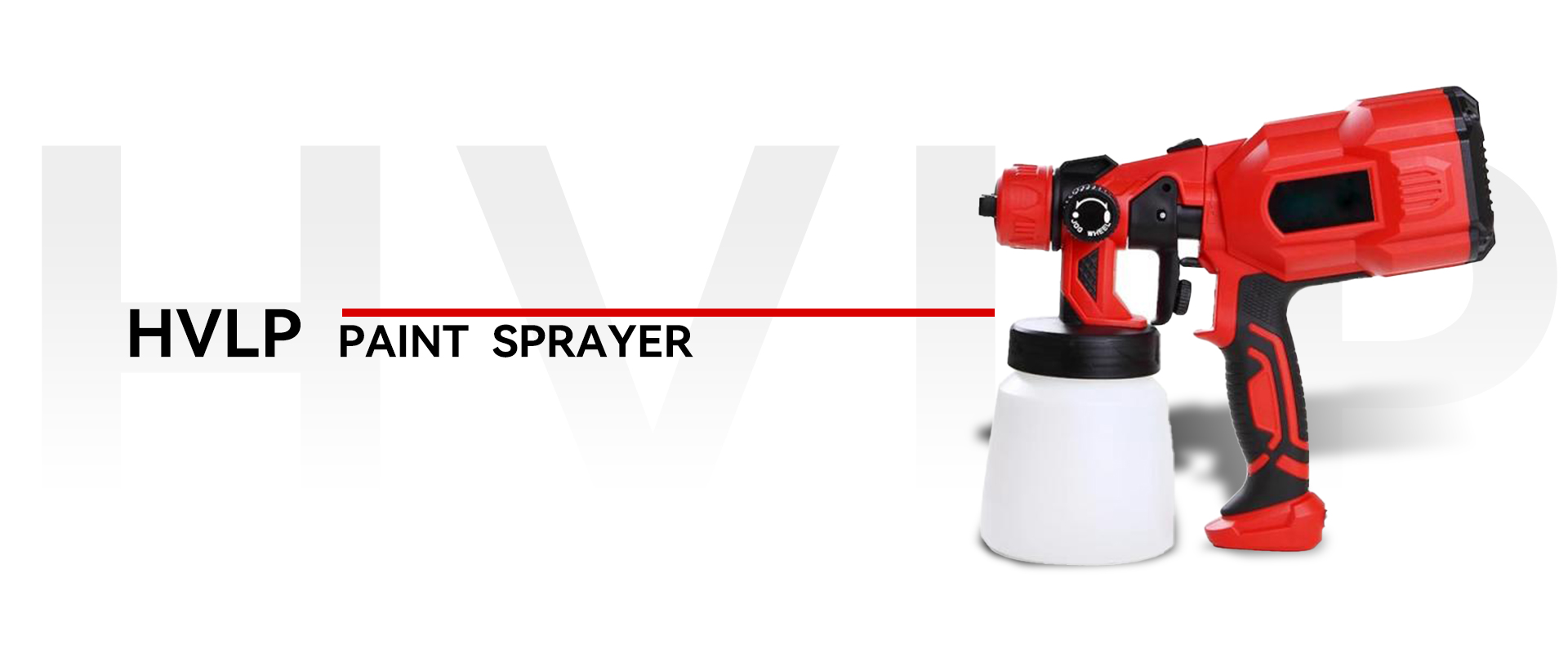
How does HVLP spraying work?
The turbine generates airflow, which is directed into the paint container and nozzle of the spray gun.
As the airflow enters the paint container, it compresses the air inside and pushes the paint through the suction tube towards the nozzle.
With the combination of high air volume and low pressure, the paint is atomized into fine particles at the nozzle outlet, creating the spray jet.
Because both paint particles and air are propelled through the nozzle, the paint particles are surrounded by the air stream, similar to an air jacket. This helps minimize overspray and ensures more efficient material transfer. As a result, users benefit from better coverage and reduced material waste.
Advantages of HVLP:
- · Precise Control: HVLP sprayers provide precise control over paint flow, allowing users to adjust the spray pattern, paint volume, and air pressure according to their specific needs. This level of control enables users to achieve accurate and consistent results, especially for detailed work such as trim, furniture staining, and cabinet painting.
- · Reduced Overspray: Compared to traditional paint sprayers, HVLP sprayers produce minimal overspray. By atomizing the paint at low pressure, HVLP guns ensure that more paint reaches the intended surface, reducing waste and cleanup time.
- · Even Spray: HVLP sprayers deliver a softer and more even spray pattern, resulting in a smoother finish with fewer imperfections. This makes them ideal for achieving professional-quality results on various surfaces, including wood, metal, and plastic.
- · Minimized Air Pollution: Due to their low-pressure operation, HVLP sprayers generate less airborne paint particles, reducing the risk of environmental pollution. This makes them a preferred choice for environmentally conscious users and those working in enclosed spaces where ventilation may be limited.
Users of HVLP Sprayers:
Individuals who prefer using HVLP sprayers typically include:
- · Professional painters and contractors: They rely on HVLP sprayers for their precision and efficiency, allowing them to complete projects quickly and with high-quality results.
- · DIY enthusiasts and hobbyists: HVLP sprayers are popular among DIY enthusiasts for home improvement projects, such as refinishing furniture, painting cabinets, and applying decorative finishes.
- · Automotive painters: HVLP sprayers are commonly used in automotive painting for their ability to produce smooth and uniform coats of paint, making them suitable for detailing and customizing vehicles.
These users are typically characterized by their attention to detail, desire for professional-grade results, and appreciation for the versatility and efficiency of HVLP sprayers. They may vary in skill level and experience but share a common goal of achieving superior finishes with minimal effort.
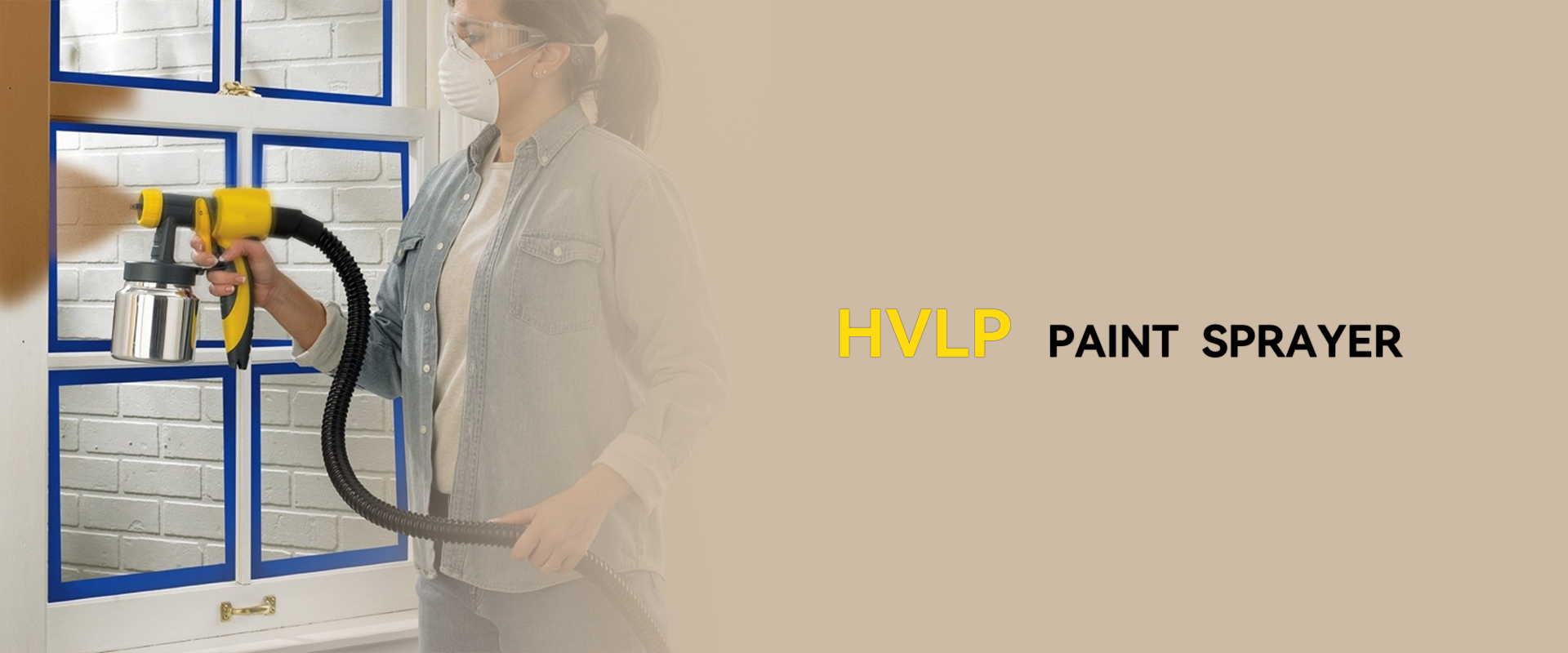
Disadvantages of HVLP:
- · Limited Application with Highly Viscous Coatings: HVLP sprayers may struggle to atomize highly viscous coatings effectively. These thick paints or finishes can clog the nozzle or require excessive thinning, compromising the quality of the finish and reducing efficiency.
- · Frequent Refilling: HVLP sprayers typically have smaller paint containers or cups compared to airless paint sprayers. As a result, users may need to refill the paint reservoir more frequently, leading to interruptions in the painting process and potentially affecting productivity, especially for large-scale projects.
- · Longer Application Time: While HVLP sprayers excel in providing precise control and minimizing overspray, they may require more time to complete a painting job compared to airless paint sprayers. The need for multiple passes and slower application speeds can extend the overall painting process, particularly for projects requiring coverage of large surface areas.
- · Higher Cost: HVLP sprayers tend to be more expensive upfront compared to airless paint sprayers, making them less accessible to budget-conscious users, such as DIY enthusiasts or small-scale contractors. Additionally, the need for additional equipment, such as an air compressor or turbine, can further increase the initial investment required.
Contractors often prefer airless paint sprayers over HVLP sprayers due to their higher production capabilities and ability to handle a wider range of coatings, including thicker materials. Airless sprayers are favored for large-scale projects where speed and efficiency are paramount, such as painting exterior walls, decks, and commercial buildings. Additionally, airless sprayers require less thinning of paint and offer faster coverage rates, making them a preferred choice for contractors looking to maximize productivity on job sites.
Applications of HVLP:
HVLP sprayers find extensive use in various applications due to their versatility and precision. They are mainly used to spray low-viscosity paints. Commonly employed for:
- · Car Finishing: HVLP sprayers are favored in automotive refinishing for applying clear coats, basecoats, and other paint finishes with high precision and minimal overspray.
- · Wood Surface Coating: Woodworkers often use HVLP sprayers for staining, varnishing, and painting wood surfaces, such as furniture, cabinets, and trim, to achieve a smooth and uniform finish.
- · Fine Finishes: HVLP sprayers excel in delivering fine finishes on intricate surfaces, such as metalwork, intricate woodworking projects, and detailed artwork, where precision and control are essential.
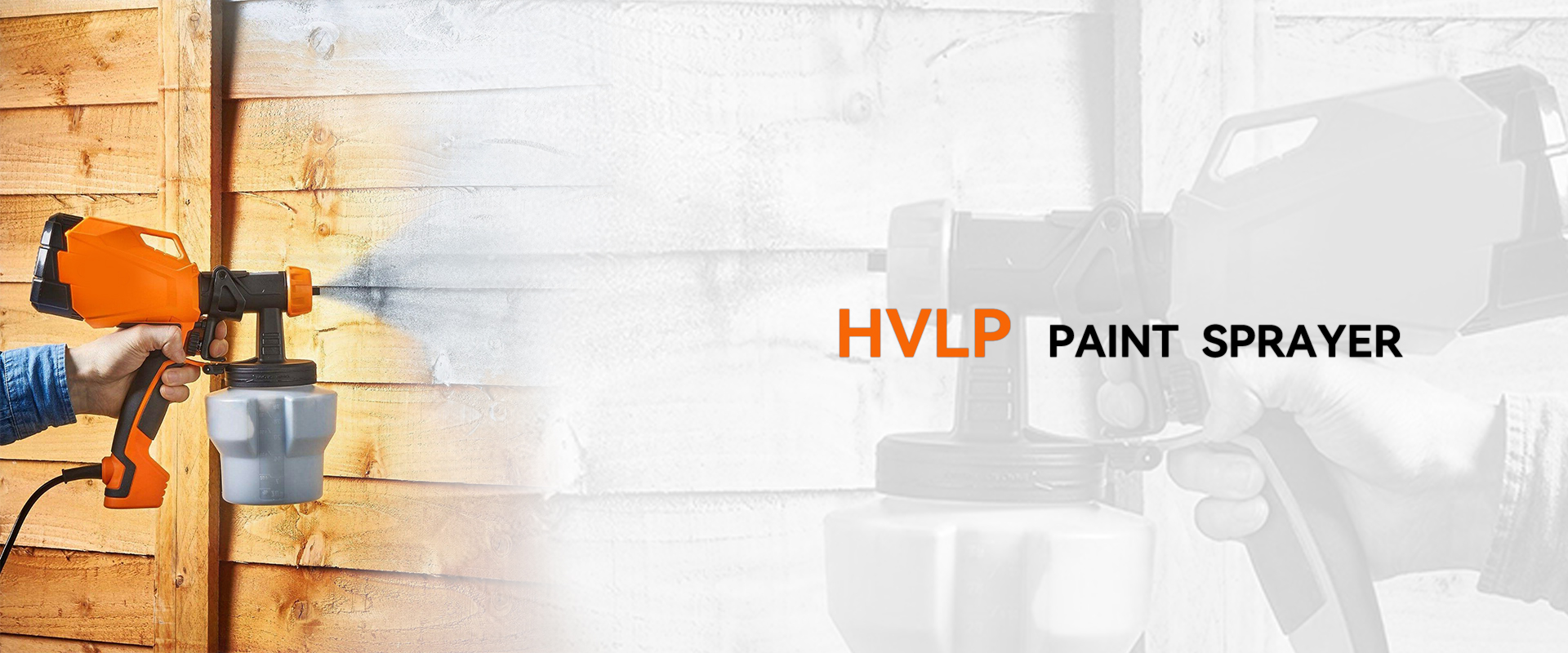
Current most popular HVLP product on Amazon:
Vonforn HVLP Paint Sprayer:
HomeRight HVLP Paint Sprayer:
BUENDIO 700W HVLP Paint Sprayer TPX01:
These products are among the top-selling HVLP sprayers on Amazon as of March 6, 2024.
What is airless paint sprayer?
An airless paint sprayer is a device used for painting that operates without the need for compressed air. Instead, it uses a pump to pressurize paint and force it through a nozzle, atomizing the paint into tiny droplets for application onto surfaces.
The working principle of an airless paint sprayer involves the following steps:
- · Pressurization: The paint is drawn into the sprayer's pump, which pressurizes it using a piston or diaphragm mechanism.
- · Atomization: Once pressurized, the paint is forced through a small opening in the nozzle at high pressure. This high-pressure stream of paint breaks up into fine droplets as it exits the nozzle.
- · Application: The atomized paint is sprayed onto the surface being painted, resulting in a smooth and even coat.
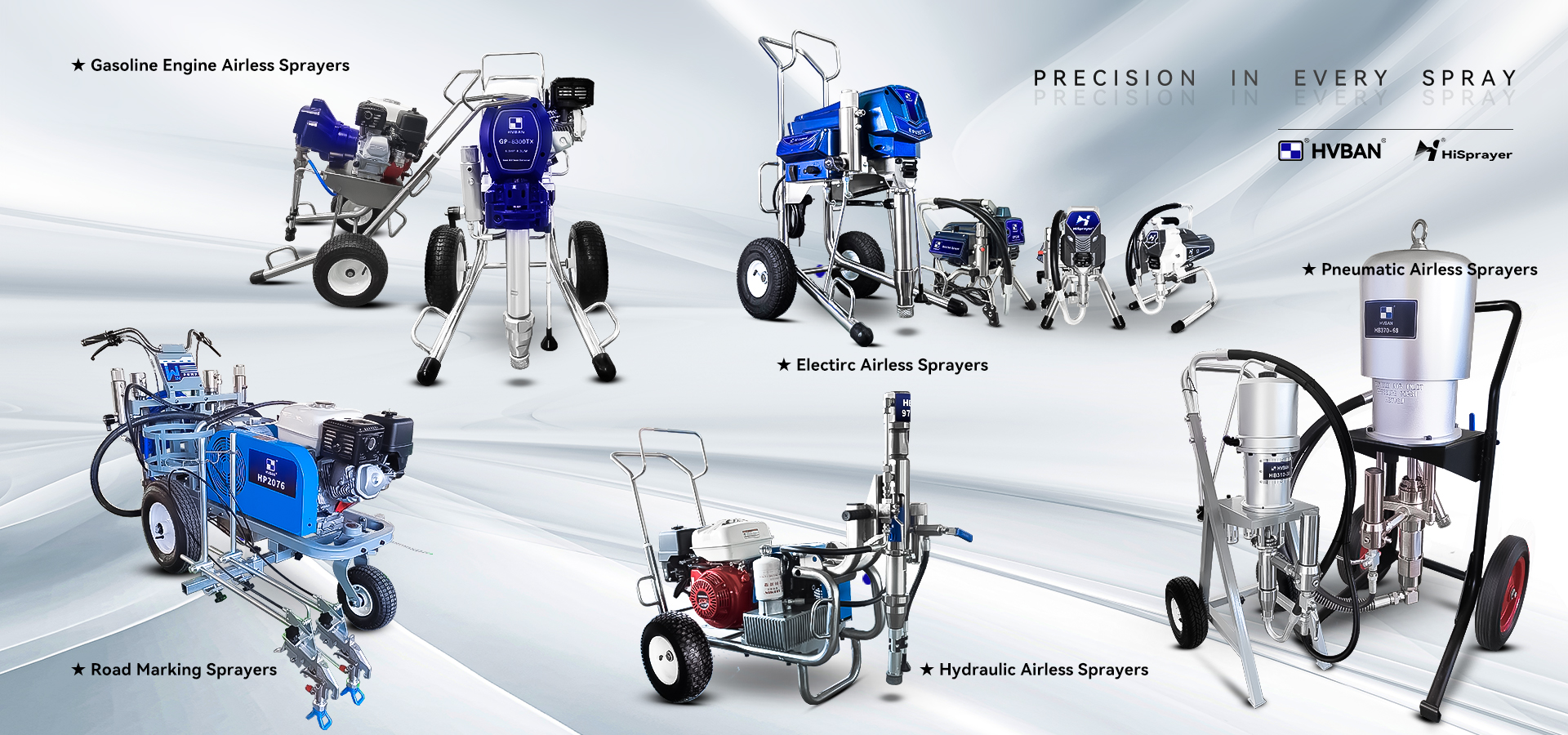
Advantages of Airless Paint Sprayers:
- · High Volume Applications: Airless paint sprayers are capable of handling large-scale painting projects efficiently. They can cover extensive surface areas quickly, making them ideal for projects like painting walls, fences, and buildings.
- · Versatility: Airless sprayers can accommodate a wide range of coating materials, including thick paints, primers, stains, and varnishes. This versatility makes them suitable for various applications in industries such as construction, automotive, and marine.
- · Uniform Coverage: Airless sprayers deliver a consistent and uniform coat of paint, ensuring an even finish across the painted surface. This uniformity is especially crucial for large-scale projects where consistency is key.
- · Time Efficiency: Due to their high spraying speed and coverage capabilities, airless paint sprayers can significantly reduce painting time compared to traditional methods like brushing or rolling. This time efficiency makes them popular among professional painters and contractors working on tight deadlines.
- · Cost Savings: Airless paint sprayers can minimize paint wastage by efficiently transferring the coating material onto the surface without overspray. This reduction in waste leads to cost savings on paint materials, making airless sprayers a cost-effective choice for large projects.
Disadvantages of Airless Paint Sprayers:
- · Overspray Concerns: The powerful nature of airless sprayers can result in overspray, where paint particles disperse beyond the intended area. This requires careful masking and protective measures to prevent paint residue on unintended surfaces.
- · Time-Consuming Cleanup: Cleaning a paint sprayer after use is more involved than cleaning brushes or rollers. It requires disassembly and thorough flushing to ensure proper maintenance and prevent clogs. This process adds to the overall cleanup time, making it more time-consuming.
Enhance Your Painting Projects with HVBAN Airless Sprayers
Take your painting projects to new heights with HVBAN Airless Sprayers. Designed to deliver superior performance and unmatched reliability, our sprayers are the perfect solution for professionals and DIY enthusiasts alike. Say goodbye to overspray and wasted paint—HVBAN Airless Sprayers minimize waste while providing precise control over spray patterns and paint flow. Whether you're tackling residential, commercial, or industrial projects, HVBAN Airless Sprayers are the ultimate tool for achieving professional-quality results with ease. Enhance your painting projects with HVBAN and experience the difference for yourself.
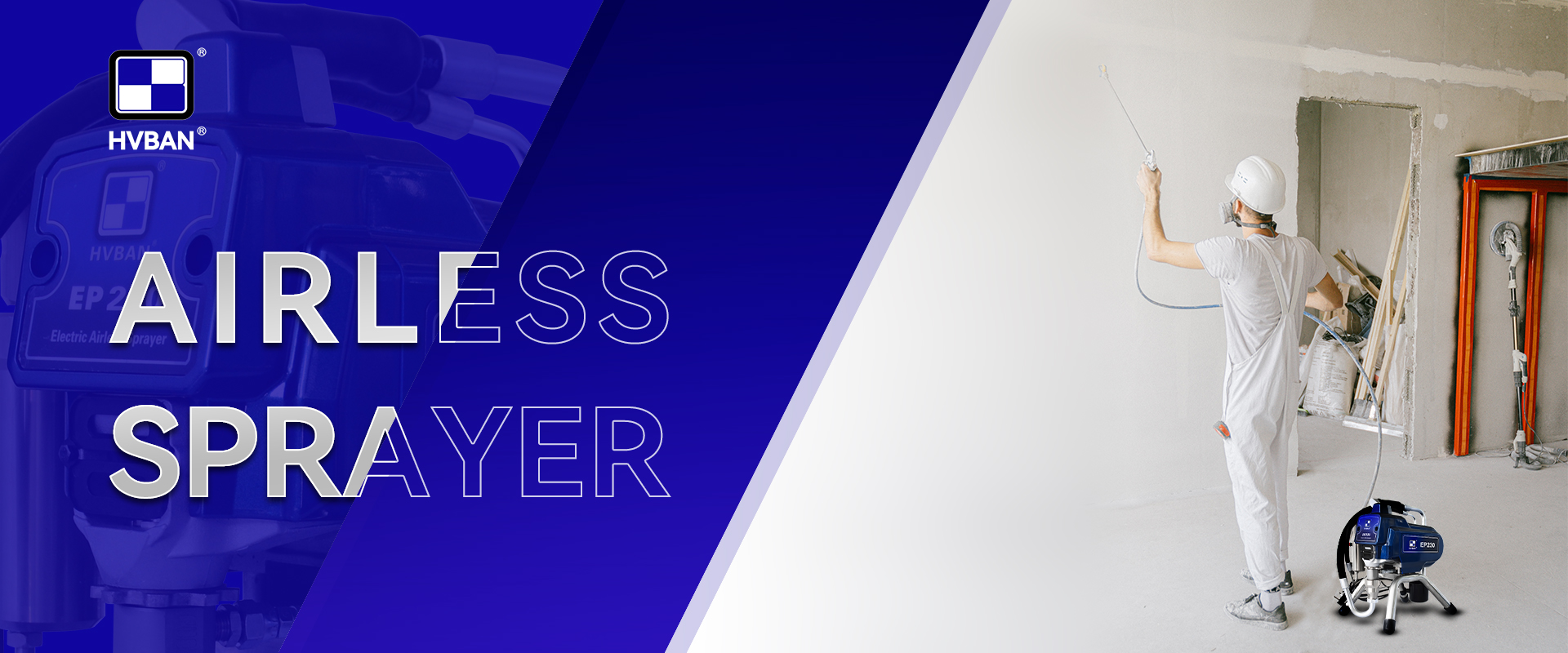
Applications of airless paint sprayer
Airless paint sprayers are versatile tools widely used in various applications due to their efficiency and effectiveness. Some common applications include:
- · Residential Painting: Airless sprayers are popular for painting interior and exterior walls, ceilings, and fences in residential settings. They allow for quick coverage of large surface areas with minimal effort.
- · Commercial Painting: Contractors often use airless sprayers for commercial painting projects, such as painting offices, retail spaces, and warehouses. Their high-volume output enables fast completion of large-scale projects.
- · Industrial Coating: Airless sprayers are suitable for applying protective coatings and finishes to industrial equipment, machinery, and structures. They can handle thick coatings like epoxy and polyurethane with ease.
- · Automotive Refinishing: In automotive workshops, airless sprayers are used for applying primers, basecoats, and clearcoats. They provide a smooth and even finish, essential for professional automotive refinishing.
- · Marine Coating: Airless sprayers are commonly employed for painting boats, ships, and marine structures. They can apply marine paints and coatings efficiently, even in challenging marine environments.
- · Construction Projects: Contractors use airless sprayers for various construction-related tasks, including painting steel structures, concrete surfaces, and new construction projects like bridges and tunnels.
- · Decorative Finishing: Airless sprayers are used in decorative painting applications, such as faux finishing, murals, and artistic projects. They provide precise control over paint application, allowing for intricate designs and patterns.
- · Roof Coating: Roofing contractors use airless sprayers to apply coatings and sealants to roofs, including elastomeric coatings, waterproofing membranes, and reflective roof coatings.
Overall, airless paint sprayers are versatile tools suitable for a wide range of applications in residential, commercial, industrial, and automotive settings, making them indispensable for professionals across various industries.
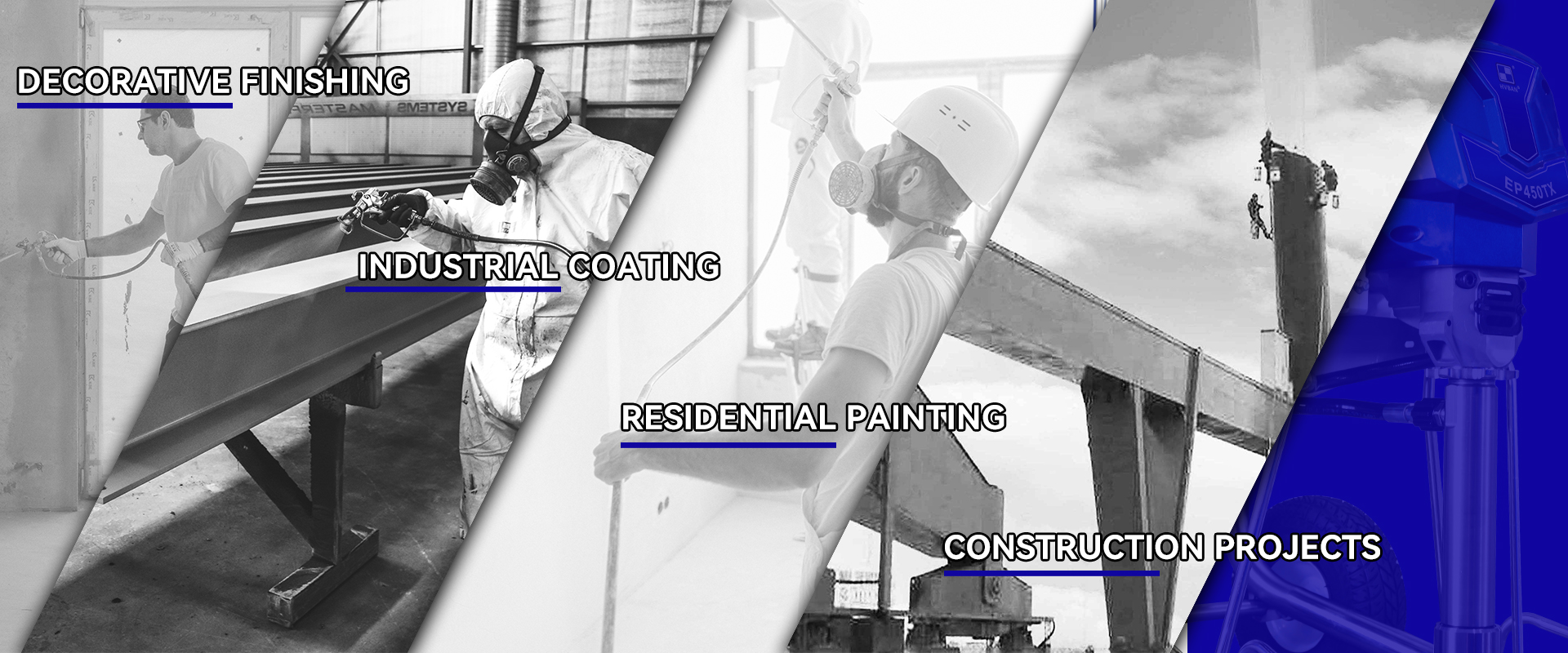
Conclusion
In conclusion, when it comes to choosing between HVLP and airless paint sprayers, it ultimately depends on your specific painting needs and preferences. Both types of sprayers offer unique advantages and disadvantages, making them suitable for different applications and scenarios.
HVLP sprayers are ideal for tasks that require precise control, minimal overspray, and fine finishes, such as detailed woodworking projects, automotive refinishing, and furniture painting. They excel in providing consistent results and are preferred by professionals and DIY enthusiasts who prioritize quality and accuracy.
On the other hand, airless paint sprayers are favored for their high-volume capabilities, versatility, and efficiency. They are well-suited for covering large surface areas quickly and are commonly used in residential, commercial, industrial, and automotive painting projects. While they may produce more overspray and lack the precision of HVLP sprayers, airless sprayers offer unmatched speed and productivity, making them indispensable tools for contractors and professionals handling large-scale projects.
Ultimately, some individuals may find that having both HVLP and airless paint sprayers in their arsenal provides the best of both worlds, allowing them to tackle a wide range of painting tasks with precision and efficiency. By understanding the differences between these two types of sprayers and considering your specific requirements, you can make an informed decision and choose the right tool for your next painting project.
Whether you opt for the precision of an HVLP sprayer or the efficiency of an airless paint sprayer, investing in high-quality equipment like HVBAN's airless sprayers ensures professional results and enhances your painting experience. With innovative features designed to minimize overspray, improve control, and maximize productivity, HVBAN sprayers are the perfect solution for contractors and professionals seeking superior performance and reliability in their painting endeavors.
In conclusion, by selecting the appropriate painting tool and understanding its applications, you can achieve outstanding results and elevate your painting projects to new heights of excellence.

 中文版
中文版 English
English Français
Français Deutsch
Deutsch Pусский
Pусский España
España Indonesia
Indonesia عربي ،
عربي ، Türk
Türk Portugal
Portugal






